My
List |
Addition Date
|
Target
|
Mission
|
Instrument
|
Size
|

|
2015-04-14 |
|
Spitzer Space Telescope
|
|
3556x2000x3 |
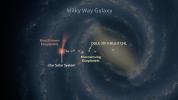
|
-
PIA19333:
-
Map of Exoplanets Found in Our Galaxy (Artist's Concept)
Full Resolution:
TIFF
(21.34 MB)
JPEG
(500.1 kB)
|

|
2015-04-14 |
|
Spitzer Space Telescope
|
|
3840x2160x3 |
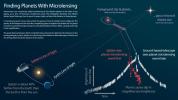
|
-
PIA19332:
-
Infographic: Finding Planets With Microlensing
Full Resolution:
TIFF
(24.89 MB)
JPEG
(613.4 kB)
|

|
2015-04-14 |
|
Spitzer Space Telescope
|
|
3300x2550x3 |
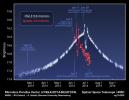
|
-
PIA19331:
-
Time Delay in Microlensing Event
Full Resolution:
TIFF
(25.26 MB)
JPEG
(502.2 kB)
|

|
2015-03-23 |
|
Spitzer Space Telescope
|
IRAC
Kitt Peak National Observatory
|
4008x2255x3 |
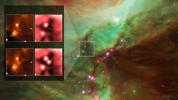
|
-
PIA18928:
-
Embryonic Star's Outburst
Full Resolution:
TIFF
(27.12 MB)
JPEG
(509.5 kB)
|

|
2015-01-27 |
|
Spitzer Space Telescope
|
IRAC
|
2694x1601x3 |
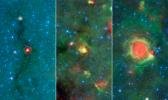
|
-
PIA18909:
-
Evolution of a Massive Star
Full Resolution:
TIFF
(12.94 MB)
JPEG
(410.2 kB)
|

|
2015-01-27 |
|
Spitzer Space Telescope
|
IRAC
|
3000x1688x3 |

|
-
PIA18908:
-
Finding 'Yellowballs' in our Milky Way
Full Resolution:
TIFF
(15.2 MB)
JPEG
(413.7 kB)
|

|
2014-12-19 |
|
Spitzer Space Telescope
|
IRAC
|
6250x3800x3 |
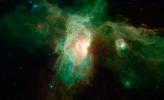
|
-
PIA18905:
-
Horsehead of a Different Color
Full Resolution:
TIFF
(71.28 MB)
JPEG
(848.6 kB)
|

|
2014-12-05 |
|
Spitzer Space Telescope
|
Canada France Hawaii Telescope
IRAC
Very Large Array (VLA)
|
3615x3500x3 |
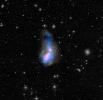
|
-
PIA18902:
-
A Flood of Gas
Full Resolution:
TIFF
(14.47 MB)
JPEG
(2.111 MB)
|

|
2014-11-10 |
|
Spitzer Space Telescope
|
Spitzer Space Telescope
|
3300x4000x3 |

|
-
PIA18900:
-
Sibling Star Systems? Dust Structures Suggest So
Full Resolution:
TIFF
(39.62 MB)
JPEG
(590.8 kB)
|

|
2014-11-06 |
|
CIBER
Hubble Space Telescope
Spitzer Space Telescope
|
|
4000x2000x3 |
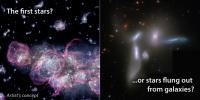
|
-
PIA18851:
-
First Stars or Stray Stars? A Cosmic Infrared Mystery
Full Resolution:
TIFF
(24.01 MB)
JPEG
(840.9 kB)
|

|
2014-10-22 |
|
Spitzer Space Telescope
|
IRAC
|
1188x1188x3 |
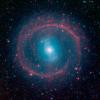
|
-
PIA18847:
-
Ring of Stellar Fire
Full Resolution:
TIFF
(4.236 MB)
JPEG
(173.1 kB)
|

|
2014-09-24 |
|
Hubble Space Telescope
Kepler
Spitzer Space Telescope
|
|
1893x1125x3 |
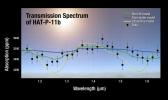
|
-
PIA18839:
-
Transmission Spectrum of HAT-P-11b
Full Resolution:
TIFF
(6.391 MB)
JPEG
(139.1 kB)
|

|
2014-09-24 |
|
Hubble Space Telescope
Kepler
Spitzer Space Telescope
|
|
4200x2400x3 |
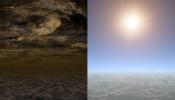
|
-
PIA18838:
-
A Sunny Outlook for 'Weather' on Exoplanets (Artist's Concept)
Full Resolution:
TIFF
(30.26 MB)
JPEG
(473.5 kB)
|

|
2014-09-24 |
|
Hubble Space Telescope
Spitzer Space Telescope
|
|
4124x2320x3 |
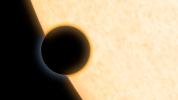
|
-
PIA18837:
-
Seeing Starlight Through a Planet's Rim (Artist's Concept)
Full Resolution:
TIFF
(28.72 MB)
JPEG
(324.8 kB)
|

|
2014-09-09 |
|
Spitzer Space Telescope
Subaru Telescope
|
|
4096x4096x3 |
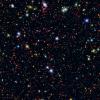
|
-
PIA18472:
-
Take a Splash Into the Cosmos
Full Resolution:
TIFF
(50.35 MB)
JPEG
(2.502 MB)
|

|
2014-08-28 |
|
Spitzer Space Telescope
|
|
3800x2138x3 |
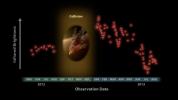
|
-
PIA18470:
-
Witnessing a Planetary Wreckage
Full Resolution:
TIFF
(24.38 MB)
JPEG
(260.9 kB)
|

|
2014-08-28 |
|
Spitzer Space Telescope
|
|
4005x2253x3 |
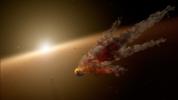
|
-
PIA18469:
-
Building Planets Through Collisions (Artist's Concept)
Full Resolution:
TIFF
(27.08 MB)
JPEG
(415.7 kB)
|

|
2014-08-27 |
|
Hubble Space Telescope
Spitzer Space Telescope
|
|
3000x2000x3 |
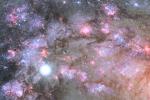
|
-
PIA18471:
-
A Cauldron of Star Birth in the Center of a Young Galaxy (Artist's Concept)
Full Resolution:
TIFF
(18.01 MB)
JPEG
(1.482 MB)
|

|
2014-08-21 |
|
Chandra X-ray Observatory
Spitzer Space Telescope
XMM-Newton
|
MIPS
XMM-Newton X-ray
|
2051x1591x3 |
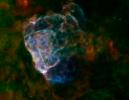
|
-
PIA18468:
-
Supernova Seen In Two Lights
Full Resolution:
TIFF
(9.794 MB)
JPEG
(189.6 kB)
|

|
2014-07-23 |
|
Kepler
Spitzer Space Telescope
|
|
3300x2400x3 |
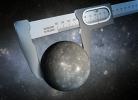
|
-
PIA18463:
-
Gauging an Alien World's Size (Artist Concept)
Full Resolution:
TIFF
(23.77 MB)
JPEG
(993.3 kB)
|

|
2014-07-02 |
|
Chandra X-ray Observatory
Spitzer Space Telescope
|
|
1232x960x3 |
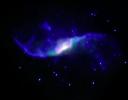
|
-
PIA18462:
-
Black Hole Jets Make Shock Waves
Full Resolution:
TIFF
(3.55 MB)
JPEG
(31.11 kB)
|

|
2014-07-02 |
|
Chandra X-ray Observatory
Hubble Space Telescope
Spitzer Space Telescope
Very Large Array (VLA)
|
|
3600x2812x3 |
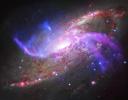
|
-
PIA18461:
-
Galactic Pyrotechnics on Display
Full Resolution:
TIFF
(30.38 MB)
JPEG
(1.396 MB)
|

|
2014-06-19 |
Asteroid
|
Spitzer Space Telescope
|
|
4267x2400x3 |
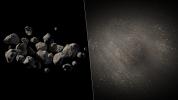
|
-
PIA18456:
-
The Spacious Structure of Asteroid 2011 MD (Artist's Concept)
Full Resolution:
TIFF
(30.74 MB)
JPEG
(529.5 kB)
|

|
2014-06-19 |
Asteroid
|
Spitzer Space Telescope
|
|
2800x1800x3 |
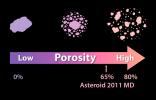
|
-
PIA18455:
-
Solid as a Rock? Porosity of Asteroids
Full Resolution:
TIFF
(15.13 MB)
JPEG
(196.5 kB)
|

|
2014-06-19 |
Asteroid
|
Spitzer Space Telescope
|
|
3500x1900x3 |
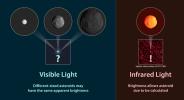
|
-
PIA18454:
-
How to Measure the Size of an Asteroid
Full Resolution:
TIFF
(19.96 MB)
JPEG
(305.5 kB)
|

|
2014-06-19 |
Asteroid
|
Spitzer Space Telescope
|
IRAC
|
1120x1120x3 |
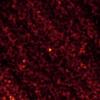
|
-
PIA18453:
-
I Spy a Little Asteroid With My Infrared Eye
Full Resolution:
TIFF
(3.765 MB)
JPEG
(42.88 kB)
|

|
2014-06-04 |
|
Spitzer Space Telescope
|
IRAC
|
986x1135x3 |

|
-
PIA18009:
-
Dissecting Dust from Detonation of Dead Star
Full Resolution:
TIFF
(3.359 MB)
JPEG
(103.6 kB)
|

|
2014-05-28 |
|
Spitzer Space Telescope
|
IRAC
Two Micron All Sky Survey (2MASS)
|
2251x1476x3 |
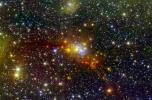
|
-
PIA18014:
-
The 'Serpent' Star-Forming Cloud Spawns Stars
Full Resolution:
TIFF
(9.972 MB)
JPEG
(628.5 kB)
|

|
2014-05-21 |
|
Spitzer Space Telescope
|
IRAC
|
2500x2500x3 |
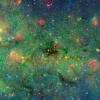
|
-
PIA18010:
-
Mapping the Densest Dusty Cloud Cores
Full Resolution:
TIFF
(18.76 MB)
JPEG
(1.225 MB)
|

|
2014-05-07 |
|
Chandra X-ray Observatory
Spitzer Space Telescope
|
|
3600x3600x3 |
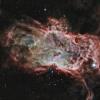
|
-
PIA18249:
-
Inside the Flame Nebula
Full Resolution:
TIFF
(38.89 MB)
JPEG
(874.9 kB)
|

|
2014-04-25 |
|
Spitzer Space Telescope
Wide-field Infrared Survey Explorer (WISE)
|
|
1200x900x3 |
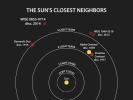
|
-
PIA18003:
-
Welcome to the Sun's Neighborhood
Full Resolution:
TIFF
(3.241 MB)
JPEG
(67.8 kB)
|

|
2014-04-25 |
|
Spitzer Space Telescope
Wide-field Infrared Survey Explorer (WISE)
|
|
810x798x3 |
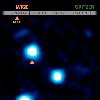
|
-
PIA18002:
-
Cold and Quick: a Fast-Moving Brown Dwarf

Full Resolution:
TIFF
(1.94 MB)
JPEG
(28.72 kB)
|

|
2014-03-26 |
|
Spitzer Space Telescope
|
Spitzer Space Telescope
|
930x886x3 |
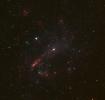
|
-
PIA17997:
-
Bulgeless Galaxy Hides Black Hole
Full Resolution:
TIFF
(2.473 MB)
JPEG
(70.62 kB)
|

|
2014-03-20 |
|
Spitzer Space Telescope
|
IRAC
|
14400x8700x3 |
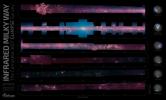
|
-
PIA17996:
-
GLIMPSE the Galaxy All the Way Around
Full Resolution:
TIFF
(375.9 MB)
JPEG
(9.296 MB)
|

|
2014-03-06 |
|
Spitzer Space Telescope
|
|
3840x2160x3 |
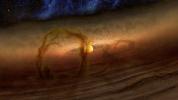
|
-
PIA17849:
-
Loops of Gas and Dust Rise from Planetary Disks (Artist Concept)
Full Resolution:
TIFF
(24.89 MB)
JPEG
(461.2 kB)
|

|
2014-02-26 |
|
Spitzer Space Telescope
|
IRAC
|
3900x2400x3 |
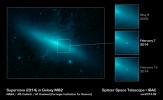
|
-
PIA17847:
-
Seeing Through a Veil of Dust
Full Resolution:
TIFF
(28.09 MB)
JPEG
(442.5 kB)
|

|
2014-02-20 |
|
Spitzer Space Telescope
|
IRAC
|
2470x1880x3 |
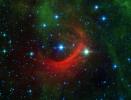
|
-
PIA17843:
-
Speedster Star Shocks the Galaxy
Full Resolution:
TIFF
(13.94 MB)
JPEG
(512.3 kB)
|

|
2014-02-07 |
|
Hubble Space Telescope
Spitzer Space Telescope
|
|
2416x1080x3 |
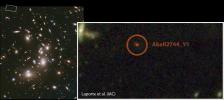
|
-
PIA17837:
-
Pushing the Limits of the Observable Universe
Full Resolution:
TIFF
(7.831 MB)
JPEG
(227.1 kB)
|

|
2014-01-06 |
|
Spitzer Space Telescope
|
|
1041x585x3 |
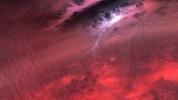
|
-
PIA21475:
-
Brown Dwarf Weather (Artist's Concept)
Full Resolution:
TIFF
(1.615 MB)
JPEG
(52.96 kB)
|

|
2013-12-18 |
|
Spitzer Space Telescope
|
IRAC
|
2000x2000x3 |
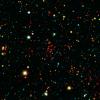
|
-
PIA17565:
-
Galactic Metropolis
Full Resolution:
TIFF
(12 MB)
JPEG
(435.8 kB)
|

|
2013-11-21 |
|
Spitzer Space Telescope
Hubble Space Telescope
Subaru Telescope
|
IRAC
|
960x960x3 |
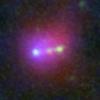
|
-
PIA17558:
-
Three-headed Galactic Blob
Full Resolution:
TIFF
(2.766 MB)
JPEG
(33.67 kB)
|

|
2013-11-14 |
|
Spitzer Space Telescope
Wide-field Infrared Survey Explorer (WISE)
|
Very Large Array (VLA)
|
2030x1200x3 |
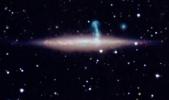
|
-
PIA17556:
-
Two Galaxies Masquerading as One
Full Resolution:
TIFF
(7.311 MB)
JPEG
(99.06 kB)
|

|
2013-11-11 |
|
Spitzer Space Telescope
|
ALMA
IRAC
|
1500x1500x3 |
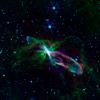
|
-
PIA17555:
-
Bubbly Newborn Star
Full Resolution:
TIFF
(6.753 MB)
JPEG
(150.4 kB)
|

|
2013-10-28 |
|
Spitzer Space Telescope
|
IRAC
|
3600x2023x3 |
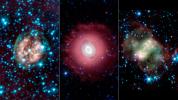
|
-
PIA17552:
-
Death Beckons Three Aging Stars
Full Resolution:
TIFF
(21.86 MB)
JPEG
(480 kB)
|

|
2013-10-17 |
|
Spitzer Space Telescope
|
Spitzer Space Telescope
|
1024x683x3 |
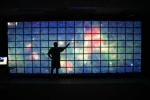
|
-
PIA17446:
-
Big Data on the Big Screen
Full Resolution:
TIFF
(2.099 MB)
JPEG
(109.1 kB)
|

|
2013-09-30 |
|
Kepler
Spitzer Space Telescope
|
Kepler Telescope
Spitzer Space Telescope
|
3840x2160x3 |
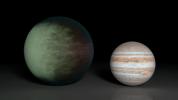
|
-
PIA17445:
-
Partially Cloudy Skies on Kepler-7b (Artist Concept)
Full Resolution:
TIFF
(24.89 MB)
JPEG
(243 kB)
|

|
2013-09-24 |
|
Spitzer Space Telescope
|
|
4533x2550x3 |
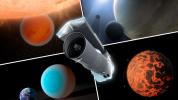
|
-
PIA17444:
-
Spitzer Trains Its Eyes on Exoplanets (Artist Concept)
Full Resolution:
TIFF
(34.7 MB)
JPEG
(684.1 kB)
|

|
2013-09-10 |
Comet
|
Spitzer Space Telescope
|
IRAC
|
2400x2400x3 |
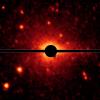
|
-
PIA17443:
-
Spitzer Spies a Comet Coma and Tail
Full Resolution:
TIFF
(17.29 MB)
JPEG
(189.8 kB)
|

|
2013-09-05 |
|
Spitzer Space Telescope
|
Spitzer Space Telescope
|
3200x1800x3 |
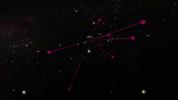
|
-
PIA17259:
-
Brown Dwarf Backyardigans
Full Resolution:
TIFF
(17.29 MB)
JPEG
(245.3 kB)
|

|
2013-09-05 |
|
Spitzer Space Telescope
|
|
3840x2160x3 |
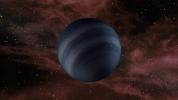
|
-
PIA17258:
-
Free-floating Failed Star (Artist Concept)
Full Resolution:
TIFF
(24.89 MB)
JPEG
(845.6 kB)
|

|
2013-08-23 |
|
Spitzer Space Telescope
|
IRAC
|
3200x2700x3 |
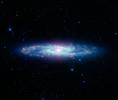
|
-
PIA17256:
-
The Barred Sculptor Galaxy
Full Resolution:
TIFF
(25.93 MB)
JPEG
(436.8 kB)
|

|
2013-08-23 |
|
Spitzer Space Telescope
|
IRAC
|
6400x6400x3 |
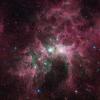
|
-
PIA17257:
-
The Tortured Clouds of Eta Carinae
Full Resolution:
TIFF
(122.9 MB)
JPEG
(5.541 MB)
|

|
2013-08-01 |
|
Spitzer Space Telescope
Wide-field Infrared Survey Explorer (WISE)
|
IRAC
|
2400x1200x3 |
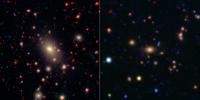
|
-
PIA17253:
-
Monster in the Middle: Brightest Cluster Galaxy
Full Resolution:
TIFF
(8.643 MB)
JPEG
(226 kB)
|

|
2013-07-31 |
|
Spitzer Space Telescope
|
|
3840x2160x3 |
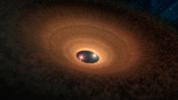
|
-
PIA17252:
-
Dusty Hula Hoop Rings 'Blinking' Stellar Duo (Illustration)
Full Resolution:
TIFF
(24.89 MB)
JPEG
(497.5 kB)
|

|
2013-07-23 |
ISON
|
Spitzer Space Telescope
|
IRAC
|
1210x788x3 |
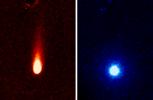
|
-
PIA17251:
-
Spitzer Eyes Comet ISON
Full Resolution:
TIFF
(2.862 MB)
JPEG
(60.64 kB)
|

|
2013-06-05 |
|
Spitzer Space Telescope
|
IRAC
|
6600x6600x3 |
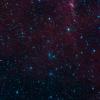
|
-
PIA17241:
-
Galaxies in Hiding
Full Resolution:
TIFF
(130.7 MB)
JPEG
(6.917 MB)
|

|
2013-06-05 |
|
Spitzer Space Telescope
Wide-field Infrared Survey Explorer (WISE)
|
IRAC
WISE Telescope
|
9000x7000x3 |
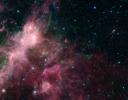
|
-
PIA17019:
-
Life and Death Intermingled
Full Resolution:
TIFF
(189.1 MB)
JPEG
(10.27 MB)
|

|
2013-06-05 |
|
Spitzer Space Telescope
Wide-field Infrared Survey Explorer (WISE)
|
IRAC
WISE Telescope
|
3000x3000x3 |
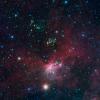
|
-
PIA17018:
-
Stars Shoot Jets in Cosmic Playground
Full Resolution:
TIFF
(27.01 MB)
JPEG
(1.76 MB)
|

|
2013-06-05 |
|
Spitzer Space Telescope
|
IRAC
|
3300x3300x3 |
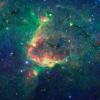
|
-
PIA17017:
-
Bubbles Within Bubbles
Full Resolution:
TIFF
(32.68 MB)
JPEG
(1.799 MB)
|

|
2013-05-24 |
|
Spitzer Space Telescope
|
IRAC
|
960x960x3 |
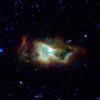
|
-
PIA17015:
-
Infrared Iris
Full Resolution:
TIFF
(2.766 MB)
JPEG
(58.18 kB)
|

|
2013-05-16 |
|
Spitzer Space Telescope
|
IRAC
|
2820x2820x3 |
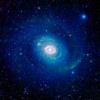
|
-
PIA17011:
-
Galactic Wheels within Wheels
Full Resolution:
TIFF
(23.87 MB)
JPEG
(733.1 kB)
|

|
2013-05-06 |
|
Spitzer Space Telescope
|
|
4000x2667x3 |
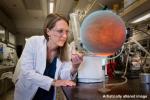
|
-
PIA17008:
-
An Astronomer's Fantasy: Planets in the Lab
Full Resolution:
TIFF
(32.01 MB)
JPEG
(1.025 MB)
|

|
2013-04-03 |
|
Chandra X-ray Observatory
Hubble Space Telescope
Spitzer Space Telescope
|
Chandra X-ray Telescope
IRAC
Visible-Light
|
3600x3600x3 |
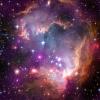
|
-
PIA16884:
-
Taken Under the 'Wing' of the Small Magellanic Cloud
Full Resolution:
TIFF
(38.89 MB)
JPEG
(1.685 MB)
|

|
2013-02-07 |
|
Hubble Space Telescope
Spitzer Space Telescope
|
|
3000x1800x3 |
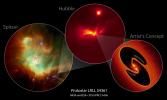
|
-
PIA16690:
-
Protostar LRLL 54361
Full Resolution:
TIFF
(16.21 MB)
JPEG
(290.6 kB)
|

|
2013-01-10 |
|
ESO Very Large Telescope
Galaxy Evolution Explorer (GALEX)
Spitzer Space Telescope
|
|
5000x2812x3 |
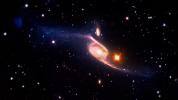
|
-
PIA16613:
-
Dwarf Galaxy Spotted
Full Resolution:
TIFF
(42.2 MB)
JPEG
(752.2 kB)
|

|
2013-01-08 |
|
Hubble Space Telescope
Spitzer Space Telescope
|
|
3300x2550x3 |
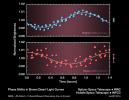
|
-
PIA16612:
-
Probing Brown Dwarf Layers
Full Resolution:
TIFF
(25.26 MB)
JPEG
(422.8 kB)
|

|
2013-01-08 |
|
Herschel Space Observatory
Spitzer Space Telescope
|
|
4267x2400x3 |
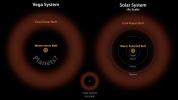
|
-
PIA16611:
-
Vega: Two Belts and the Possibility of Planets
Full Resolution:
TIFF
(30.74 MB)
JPEG
(304.7 kB)
|

|
2013-01-08 |
|
Herschel Space Observatory
Spitzer Space Telescope
|
|
4268x2400x3 |
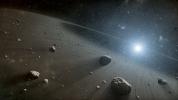
|
-
PIA16610:
-
Rocky Ring of Debris Around Vega (Artist Concept)
Full Resolution:
TIFF
(30.75 MB)
JPEG
(1.011 MB)
|

|
2013-01-08 |
|
Hubble Space Telescope
Spitzer Space Telescope
|
|
4268x2400x3 |
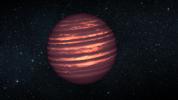
|
-
PIA16609:
-
Forecast for Exotic Weather (Artist Concept)
Full Resolution:
TIFF
(30.75 MB)
JPEG
(803.7 kB)
|

|
2013-01-08 |
|
Hubble Space Telescope
Spitzer Space Telescope
|
|
4268x2400x3 |
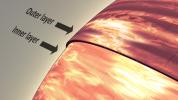
|
-
PIA16608:
-
Anatomy of Brown Dwarf's Atmosphere (Artist Concept)
Full Resolution:
TIFF
(30.75 MB)
JPEG
(469 kB)
|

|
2012-12-18 |
|
Spitzer Space Telescope
|
IRAC
|
4015x3637x3 |
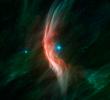
|
-
PIA16604:
-
Massive Star Makes Waves
Full Resolution:
TIFF
(43.82 MB)
JPEG
(1.115 MB)
|

|
2012-12-13 |
|
Chandra X-ray Observatory
Hubble Space Telescope
Spitzer Space Telescope
Very Large Space Telescope (VLT)
|
|
3600x3600x3 |
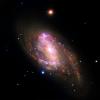
|
-
PIA15806:
-
NGC 3627: Revealing Hidden Black Holes
Full Resolution:
TIFF
(38.89 MB)
JPEG
(646 kB)
|

|
2012-11-07 |
|
Chandra X-ray Observatory
Isaac Newton Telescope
Spitzer Space Telescope
|
|
3600x3600x3 |
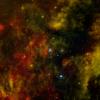
|
-
PIA16438:
-
A Nearby Stellar Cradle
Full Resolution:
TIFF
(20.2 MB)
JPEG
(1.678 MB)
|

|
2012-11-01 |
|
Spitzer Space Telescope
|
|
2100x2429x3 |

|
-
PIA16212:
-
Scenarios for the Evolution of Asteroid Belts
Full Resolution:
TIFF
(15.31 MB)
JPEG
(616.5 kB)
|

|
2012-10-24 |
|
Spitzer Space Telescope
|
|
3600x2400x3 |
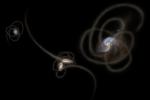
|
-
PIA16216:
-
Spitzer Sees Stray Starlight (Artist's Concept)
Full Resolution:
TIFF
(25.93 MB)
JPEG
(219.2 kB)
|

|
2012-10-24 |
|
Spitzer Space Telescope
|
IRAC
|
2847x1422x3 |
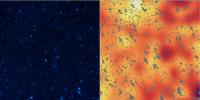
|
-
PIA16215:
-
Unmasking a Hidden Glow
Full Resolution:
TIFF
(12.15 MB)
JPEG
(986.3 kB)
|

|
2012-10-03 |
|
Galaxy Evolution Explorer (GALEX)
Spitzer Space Telescope
|
IRAC
Ultraviolet/Visible Camera
|
6019x6019x3 |
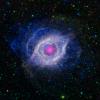
|
-
PIA15817:
-
The Helix Nebula: Unraveling at the Seams
Full Resolution:
TIFF
(108.7 MB)
JPEG
(3.087 MB)
|

|
2012-10-03 |
|
Spitzer Space Telescope
|
Spitzer Space Telescope
|
3000x2400x3 |
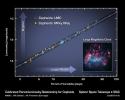
|
-
PIA15819:
-
Cepheids as Cosmology Tools
Full Resolution:
TIFF
(21.61 MB)
JPEG
(453.3 kB)
|

|
2012-10-03 |
|
Spitzer Space Telescope
|
|
4444x2500x3 |
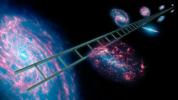
|
-
PIA15818:
-
Climbing the Cosmic Distance Ladder (Artist's Concept)
Full Resolution:
TIFF
(33.35 MB)
JPEG
(769.2 kB)
|

|
2012-08-15 |
Messier 100
|
Spitzer Space Telescope
|
IRAC
MIPS
|
1016x1016x3 |
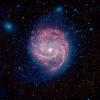
|
-
PIA15910:
-
The Swirling Arms of the M100 Galaxy
Full Resolution:
TIFF
(2.503 MB)
JPEG
(150.8 kB)
|

|
2012-08-15 |
Messier 100
|
Spitzer Space Telescope
|
IRAC
MIPS
|
1016x1016x3 |
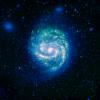
|
-
PIA15909:
-
Hot and Cold in the M100 Galaxy
Full Resolution:
TIFF
(2.12 MB)
JPEG
(148.6 kB)
|

|
2012-07-18 |
|
Spitzer Space Telescope
|
|
5120x2880x3 |
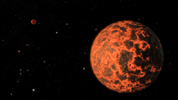
|
-
PIA15808:
-
Exoplanet is Extremely Hot and Incredibly Close (Artist's Concept)

Full Resolution:
TIFF
(44.26 MB)
JPEG
(821.4 kB)
|

|
2012-06-07 |
|
Spitzer Space Telescope
|
IRAC
|
2824x732x3 |

|
-
PIA15634:
Hidden Patterns of Light Revealed by Spitzer
Full Resolution:
TIFF
(6.205 MB)
JPEG
(540.7 kB)
|

|
2012-05-23 |
|
Spitzer Space Telescope
|
|
2299x2299x3 |
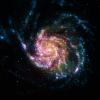
|
-
PIA15630:
-
Pinwheel Galaxy Rainbow
Full Resolution:
TIFF
(15.87 MB)
JPEG
(422.2 kB)
|

|
2012-05-08 |
|
Spitzer Space Telescope
|
|
3600x2100x3 |
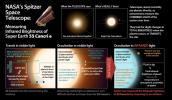
|
-
PIA15624:
-
Measuring Brightness of Super Earth 55 Cancri e
Full Resolution:
TIFF
(22.68 MB)
JPEG
(708.5 kB)
|

|
2012-05-08 |
|
Spitzer Space Telescope
|
|
1916x1076x3 |
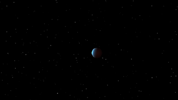
|
-
PIA15623:
-
Super Earth Reveals Itself to Spitzer (Artist Animation)

Full Resolution:
TIFF
(6.194 MB)
JPEG
(42.26 kB)
|

|
2012-05-08 |
|
Spitzer Space Telescope
|
|
3000x2400x3 |
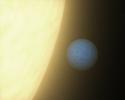
|
-
PIA15622:
-
First-of-Its-Kind Glimpse at a Super Earth (Artist Animation)
Full Resolution:
TIFF
(21.6 MB)
JPEG
(164 kB)
|

|
2012-05-08 |
|
Spitzer Space Telescope
|
IRAC
|
3000x2400x3 |
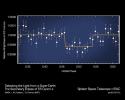
|
-
PIA15621:
-
Magician of a Planet Disappears to Reveal Itself
Full Resolution:
TIFF
(21.6 MB)
JPEG
(332.6 kB)
|

|
2012-04-24 |
|
Spitzer Space Telescope
|
IRAC
|
1970x2400x3 |

|
-
PIA15426:
-
The Sombrero Galaxy's Split Personality
Full Resolution:
TIFF
(14.2 MB)
JPEG
(437.7 kB)
|

|
2012-04-24 |
|
Spitzer Space Telescope
|
IRAC
|
1970x2400x3 |

|
-
PIA15427:
-
Sombrero Galaxy Not So Flat After All
Full Resolution:
TIFF
(14.2 MB)
JPEG
(339.1 kB)
|

|
2012-04-17 |
|
Chandra X-ray Observatory
Hubble Space Telescope
Spitzer Space Telescope
|
|
3600x2880x3 |
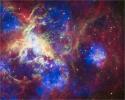
|
-
PIA14415:
-
A New View of the Tarantula Nebula
Full Resolution:
TIFF
(31.1 MB)
JPEG
(1.774 MB)
|

|
2012-04-05 |
|
Kepler
Planck
Spitzer Space Telescope
|
|
1300x700x3 |
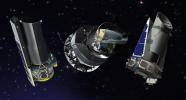
|
-
PIA15423:
-
Spitzer, Planck and Kepler Extended by NASA (Artist's Concept)
Full Resolution:
TIFF
(2.733 MB)
JPEG
(84.37 kB)
|

|
2012-04-03 |
|
Galaxy Evolution Explorer (GALEX)
Spitzer Space Telescope
|
IRAC
Ultraviolet/Visible Camera
|
1130x1130x3 |
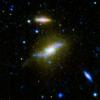
|
-
PIA15419:
-
The Beginning of the End of Star Formation
Full Resolution:
TIFF
(3.835 MB)
JPEG
(129 kB)
|

|
2012-03-08 |
|
Spitzer Space Telescope
|
IRAC
|
3000x2400x3 |
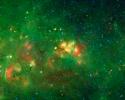
|
-
PIA15413:
-
An Audience Favorite Nebula
Full Resolution:
TIFF
(21.6 MB)
JPEG
(964.2 kB)
|

|
2012-03-08 |
|
Spitzer Space Telescope
|
GLIMPSE
MIPSGAL
|
2799x1926x3 |
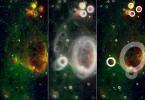
|
-
PIA15412:
-
Finding Bubbles in the Milky Way
Full Resolution:
TIFF
(16.17 MB)
JPEG
(546.9 kB)
|

|
2012-02-29 |
|
Herschel Space Observatory
Spitzer Space Telescope
|
Herschel Telescope
IRAC
|
2800x2880x3 |

|
-
PIA13959:
-
Orion's Rainbow of Infrared Light
Full Resolution:
TIFF
(24.19 MB)
JPEG
(321.2 kB)
|

|
2012-02-22 |
|
Spitzer Space Telescope
|
|
4268x2400x3 |
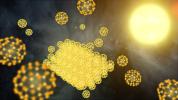
|
-
PIA15266:
-
Building a Buckyball Particle in Space (Artist Concept)
Full Resolution:
TIFF
(30.73 MB)
JPEG
(699.1 kB)
|

|
2012-01-10 |
|
Herschel Space Observatory
Spitzer Space Telescope
|
IRAC
SPIRE
PACS
|
10000x5000x3 |
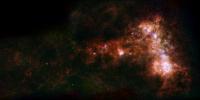
|
-
PIA15255:
-
A Dwarf Galaxy's Star Bar and Dusty Wing
Full Resolution:
TIFF
(150 MB)
JPEG
(6.56 MB)
|

|
2012-01-10 |
|
Herschel Space Observatory
Spitzer Space Telescope
|
IRAC
SPIRE
PACS
|
15500x15500x3 |
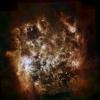
|
-
PIA15254:
-
Dusty Space Cloud
Full Resolution:
TIFF
(720.8 MB)
JPEG
(22.21 MB)
|

|
2012-01-10 |
|
Spitzer Space Telescope
|
IRAC
|
12795x12825x3 |
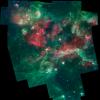
|
-
PIA15253:
-
Stars Brewing in Cygnus X
Full Resolution:
TIFF
(492.3 MB)
JPEG
(14.61 MB)
|

 Planetary Data System
Planetary Data System





















































































































